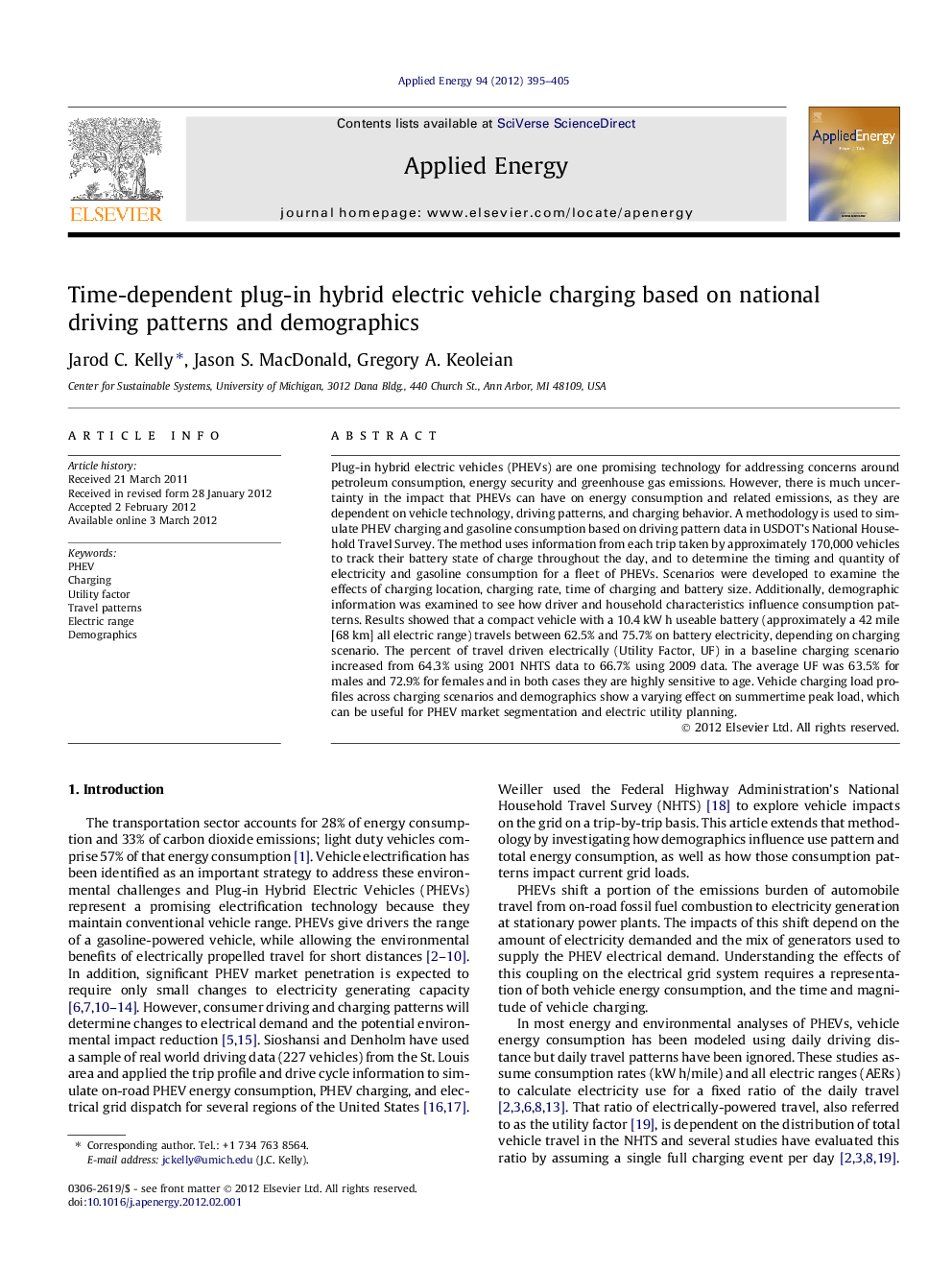| کد مقاله | کد نشریه | سال انتشار | مقاله انگلیسی | نسخه تمام متن |
|---|---|---|---|---|
| 243426 | 501928 | 2012 | 11 صفحه PDF | دانلود رایگان |

Plug-in hybrid electric vehicles (PHEVs) are one promising technology for addressing concerns around petroleum consumption, energy security and greenhouse gas emissions. However, there is much uncertainty in the impact that PHEVs can have on energy consumption and related emissions, as they are dependent on vehicle technology, driving patterns, and charging behavior. A methodology is used to simulate PHEV charging and gasoline consumption based on driving pattern data in USDOT’s National Household Travel Survey. The method uses information from each trip taken by approximately 170,000 vehicles to track their battery state of charge throughout the day, and to determine the timing and quantity of electricity and gasoline consumption for a fleet of PHEVs. Scenarios were developed to examine the effects of charging location, charging rate, time of charging and battery size. Additionally, demographic information was examined to see how driver and household characteristics influence consumption patterns. Results showed that a compact vehicle with a 10.4 kW h useable battery (approximately a 42 mile [68 km] all electric range) travels between 62.5% and 75.7% on battery electricity, depending on charging scenario. The percent of travel driven electrically (Utility Factor, UF) in a baseline charging scenario increased from 64.3% using 2001 NHTS data to 66.7% using 2009 data. The average UF was 63.5% for males and 72.9% for females and in both cases they are highly sensitive to age. Vehicle charging load profiles across charging scenarios and demographics show a varying effect on summertime peak load, which can be useful for PHEV market segmentation and electric utility planning.
► Analyzed National Household Travel Survey to simulate driving and charging patterns.
► Average compact PHEVs used 49 kW h of electricity and 6.8 L of gasoline per week.
► Percent of electrically driven miles increased from 64.3 in 2001 to 66.7 in 2009.
► Investigated demographic effects of sex, age, income, and household location.
► Analysis shows higher utility factors for females versus males and high age variation.
Journal: Applied Energy - Volume 94, June 2012, Pages 395–405